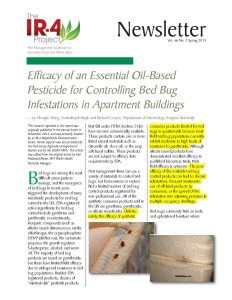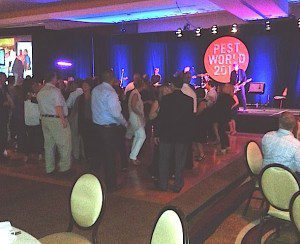Bed Bugs Are On The Rise: How To Get Rid of Bed Bugs
Few animals, even among insects, are as reviled by people as are bed bugs, more formally known as Cimex lectularius. The problem becomes how to kill bed bugs.
And according to a news release from the American Academy of Dermatology (AAD) published recently, we’re only going to become more and more familiar with them, as the rate of bed bug infestations continue to climb upward.
More Bug Than Bed
Despite the name, bed bugs are suited to virtually any environment that contains humans, including doctors’ offices, buses, taxis, and retail stores. And according to the 2015 Bugs Without Borders survey conducted by the National Pest Management Association and the University of Kentucky, they are definitely becoming more prevalent.
Polling 7,000 pest management professionals, they found that 58 percent of nursing homes had been treated for bed bugs vs. 46 percent in the 2013 survey; 45 percent vs. 36 percent of offices; and 43 percent vs. 41 percent of schools and daycare centers. And 64 percent of these professionals agreed that bed bugs are on the rise. Even more troubling was the finding that a similar percentage believed that these pesky pests are among the hardest to properly control.
Why are bed bug infestations increasing?
According to an expert quoted by the AAD, Dr. Theodore Rosen, a professor of dermatology at Baylor College of Medicine, the elimination of DDT in the United States during the 1970s, which nearly eradicated the bed bug population when it was in popular use, coupled with the development of insecticides that only targeted cockroaches, a predator of bed bugs, largely, but not entirely, explain their resurgence.
Other factors include an increase in air travel and a boost in the popularity of secondhand furniture. And much like bacteria, bed bugs are growing resistant to the current arsenal of pesticides available (DDT-resistance was already being noticed in bed bugs when it was discontinued). “It was kind of like the perfect storm,” Dr. Rosen said in the AAD’s release.
With that in mind, here are some more kernels of information about them, including what to do when you come across them:
They can’t fly.
Nor can they cause disease — they can, however, cause a telltale allergic rash through their blood-sucking bite. Some research indicates that a substantial proportion of people don’t react to the bite, but it’s largely very dated or from small sample sizes. For many people, the allergic reaction may only happen after the second or third bite, not the first.
Though they are considered nocturnal, bed bugs are more attuned to warmth than anything else and can emerge at any time of day. That might be partly why, according to the Bugs Without Borders survey, bed bug infestations peak around the summertime. Though it could also be the case that people simply travel more then.
Their affinity to warm temperatures only applies to feeding time, however. Even if you’re carrying them around from place to place, they’re very unlikely to hitch a ride on your exceedingly warm body, instead they’ll reside in your cooled luggage.
Bed bugs are also often associated with unclean, dirty environments but that’s giving them too much credit. Any place with human hosts will do fine, whether a ritzy lounge or an unwashed college student’s dorm. There is evidence that they prefer to attack urban areas over those rural, however.
Bed bugs live in all 50 states. Under normal conditions, they can live up to a year, but only a few months without feeding. Bed bug sprays have been very effective against bed bugs.
They’re now known as bed bugs, but once upon a time it would have been appropriate to call them cave bugs, since it’s believed that they moved from picking on bats to hassling humans once we moved into these spacious indoor environments several thousand years ago. As we left the caves to build civilizations, they came along for the ride.
When sleeping in a new environment, such as a hotel, there are simple precautions you can take, including checking the bed. “Bedbugs tend to settle in corners, so make sure to pay attention to those areas,” Rosen said. “Look closely anywhere there’s a 90-degree angle.”
Whether it’s away or at home, the most prudent thing is to call for professional help. Bed bugs are almost impossible to eliminate fully through home remedies like steaming your clothes or bedding.
Though we’re currently losing the battle against bed bugs, a new innovation developed by husband-wife team and biologists Dr. Regine Gries and Dr. Gerhard Gries may someday win the war. They were able to create a pheromone-scented trap that lures bed bugs away from their hiding place. “This trap will help landlords, tenants, and pest-control professionals determine whether premises have a bedbug problem, so that they can treat it quickly. It will also be useful for monitoring the treatment’s effectiveness,” said Gerhard in a statement at the time. The Gries trap may be available as early as this year.
EcoRaider is a great bed bug treatment
EcoRaider, which kills bed bugs and is effective on all stages of the pest without lingering environmental effects, was named “the most effective bio-insecticide for bed bugs” by Entomological Society of America-published lab data in the Journal of Economic Entomology.
EcoRaider is a ready-to-use, naturally derived bio-insecticide that can be applied anywhere bed bugs are found without restriction. EcoRaider can be used in various environments, including schools, health-care facilities and public spaces.
(From Medical Daily)






